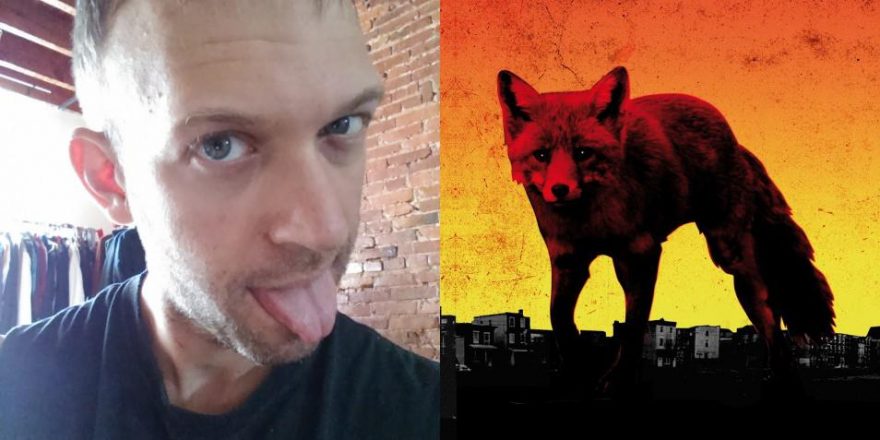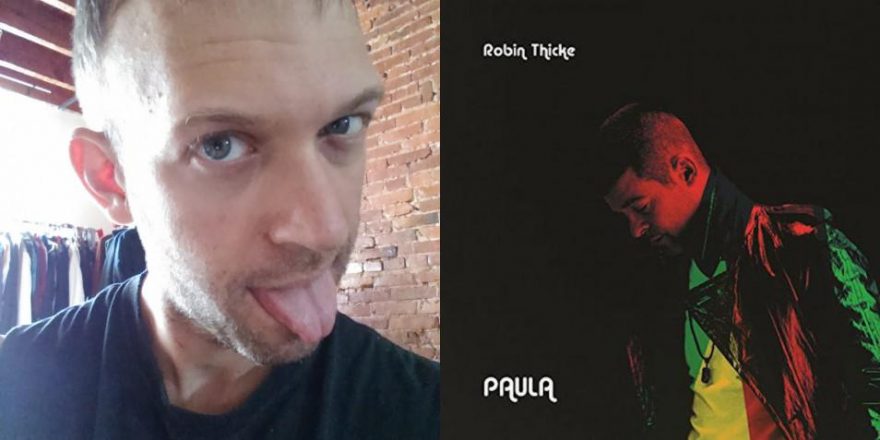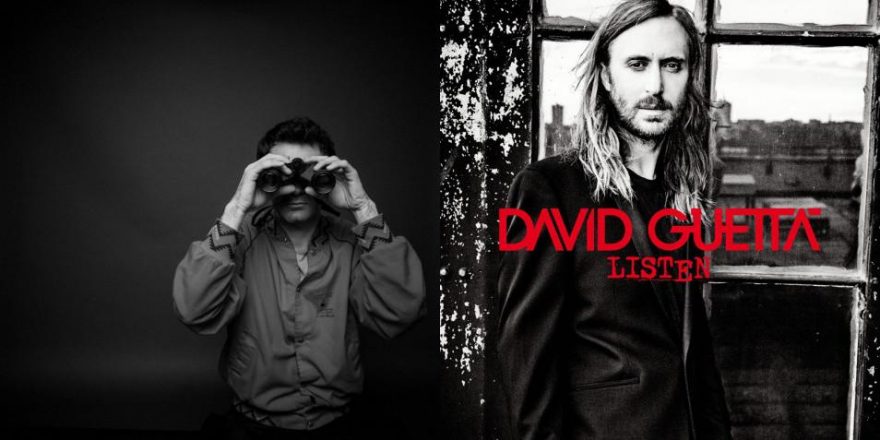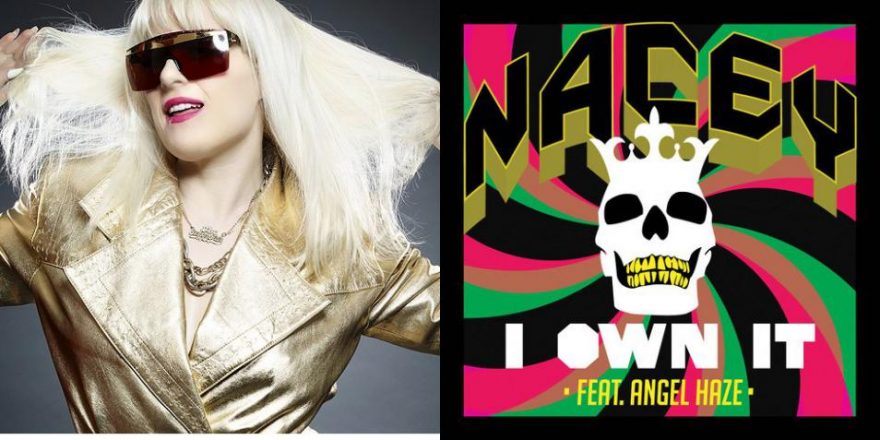When I was yay high, and then for a while after that, I didn’t like the Prodigy. I’d only heard two songs of theirs, but I’d heard those two literally one trillion times. My parents didn’t get cable TV until after I left to go live in the city, and before that there was an uncomfortably long-feeling period where every single time I turned on the music video station at some friend or relative’s house to try and glimpse new music clips, I’d see these tea-drinking trihawks waggling their tongue rings at me writhing up all wormily on the tea-stained walls of mostly empty but preciously decrepit sets, nipples out, snarling three or four nonsensical sentences over and over again in the voice you use for the primary antagonist’s toady when some child you know demands a spirited reading or re-enactment of a Walt Disney tale. It all felt awkward and corny enough to rise to the level of insult to me at the time. However, it was not easy to watch new music videos back then. Any source of overbearing redundancy stifling this search became an ill-regarded figure of oppression. It was easier to focus the resentment on the monosyllabic, shirtless spastics than on whoever it was that actually made sure that instead of seeing a video that hadn’t already been played that day, I would see the “Breathe” video once more.
It’s cool, though, that this new Prodigy album, The Day Is My Enemy, commits 500,000 percent to their classic 1996 style. Less confident veterans would have sprinkled the new one with Bass Music With a Capital B tropes like crushed peanuts on an under-30 EDM-fan glue-trap, but this record marches stridently to the beat of its own break. That seemingly endless hot minute when Prodigy and other high-energy techno bands were going to depose the rock stars with guitars was, in hindsight, snuffed out rather mercilessly. Techno guys didn’t get to writhe on MTV after US majors disinvested in “Electronica.” In one of the most enforced videos of 2002, Eminem, whose self-effacing humor helped him keep his waggling privileges for a more impressive duration, declared “Nobody Listens to Techno.” Either the situation was such that no one saw fit to contradict him, or none who did made videos that were aired by the music video station.
But time and drugs and little rituals involving beads and ambitious PA and lighting design have all but erased techno music’s stigma. In an unexpected gesture of tolerance and relevance, the Grammy Awards have recognized the community, and the rapid rise in the profile of acts like Deadmau5 and Avicii is not just a little reminiscent of the climate of optimism and investment that surrounded energetic electronic music almost 20 years ago. Indeed, today’s EDM prodigies share most of their sound palette with their Electronican ancestors. Young producers’ re-implementation of stock patches from ’90s synths has been a recurring motif in successful rap and club tracks for quite a few years now. The main quality of the mid-’90s Big Beat style that makes it markedly different from the kind of lowercase-B big beats you hear at a contemporary raving event, though, is rhythmic. Big Beats are dense and fall into a Teutonic lock-step. They derive their variety of funkiness from the mind of a rock drummer playing a fully-mic’d kit at a stadium festival, which is a very different kind of funkiness from the subtle, slippy, studio machine funk that distinguishes modern urban and dance music.
There is a visceral, undeniably martial quality to this difference which Prodigy producer/songwriter Liam Howlett exploits quite skillfully. “Are new-jack techno kids gonna dig this?” is — I think — a natural question to ask when hearing there’s gonna be a new Prodigy, and when I finally got to sit down and listen to it, my very first thought was, “Do they have mosh pits at EDM shows?”
Where more cautious folk might temper their approach, Howlett steers into the skid, turning his back on the intermediate influence of new-school hip-hop and embracing everything Wagnerian about rave anthems. He’s made a relentless record with no interest in fancy tricks or cross-genre experimentation, or variety of any sort, or anything other than pummeling all ears in range with huge, hard drums. It’s a good look, and the discipline necessary to achieve it seems admirably Spartan. The filter sweeps on the synth on many of the songs — “Rok-weiler” is a prime example — could easily have been much more sharp and pronounced, drawing an unsubtle line out to and back from Skrillex, but they stay gloriously gooey, pledging proud allegiance to the sound of pre-laptop Acid House.
The songs all follow the same rigorously predictable dynamic patterns, where every moment is a frenetic assault except for slight, tightly choreographed breakdowns that set the stage for the song’s drum-loop mantra to be resurrected with pyrotechnic emphasis like some kind of kamikaze Lazarus. And it ain’t broke. Any healthy clot of people pushed close to one another and exposed to pretty much any of these songs at a significant volume will assuredly go apeshit and bonkers. Almost all of the songs have vocals but (give or take “Ibiza,” the one with the impenetrable Cockney cackling of Sleaford Mods) they are as mantra-minded as the drums, making no attempt to convey anything apart from a mood (the mood of flipping the fuck out) and helpfully serving to keep listeners focused with a minimum of distraction by nuanced thoughts or associations. “The day is my enemy,” says the ghost of Ella Fitzgerald, “the night is my friend,” with no further elaboration. The line is turned into a cartoonishly sinister celebration of partying hard, of the use of loud music and mild poisons to get as close as one dares to relinquishing all self-control, to shout and shake and swear and so forth, with no regard for the banal bullshit you gotta do tomorrow.
It seems very much designed with the experience of the big live party in mind, but that’s not to say this album wouldn’t be quite useful anytime you’re riding a motorcycle out of a burning helicopter in slow motion, or when doing the treadmill at the gym. The fifth track, “Destroy,” is the first time the vibe goes more overtly Jock Jams than action movie or racing video game, but it’s a fine song and I would be delighted to encounter it in the context of professional athletics. The crazy high point of the album, though, is the instrumental “Beyond the Deathray” that’s exactly dead in the middle, a cinematic juggernaut of dreadful beauty that spends three minutes billowing forth an utterly irresistible mounting tension before harshly refusing to climax or continue, dropping you back in the rave tent where the party resumes as if you hadn’t just been snatched out of it and dangled high above the boiling, night-covered Earth. I listened to the record on repeat all day today, and each moment got a clearer glimpse of the colossal spirit that arrives in that eerie interval and scoops you up.
Surely it should be more remarkable that it’s such a negligible leap from the treadmill to a tank turret? Is it the result of some contamination of my own imagination that the soundtrack to a great high-impact cardio sesh quickly evokes images of armored tanks full of riled-up 20-year-old boys descending upon the desert? Perhaps because I am a musician, I am inordinately affected by stories of soldiers’ iPod playlists, like those compiled by Jonathan Pieslak. But there seems to be something deep in this music that, if contemplated for too long, points toward a dark place where our fantasies grind on each other. A dynamite cheerleading routine, a few law-defying laps in a virtual drag race, a shootout in a school taken over by criminals, the raid of an insurgent stronghold in the troubled Anbar province: they all seem like equally appropriate opportunities to unleash the leash-loathing power of the Prodigy’s new music. NME reported that the album was originally titled How to Steal a Jet Fighter and quoted Howlett describing it as “violent-sounding.” I don’t intend to imply that this easy association depreciates the value of these compositions. Surely it is not Howlett’s doing that these things are connected.
In truth, there’s actually one exception to all my generalizing here, and it is in this, the chink in the album’s berserker blinders, that I keep finding myself thinking about the bigger picture. It’s the penultimate track, the ominous and crawling “Invisible Sun,” which starts with an incongruously modern Trap Beat pattern, the kind of thing that falls out of Fruity Loops if you open it too fast. However, once Howlett gets some distorted guitars and a Twisted Sister-like chanting hook on there, that initial puppet of today’s funk is marching in step and in uniform, eyes clouded with the unmistakable glaze of Stockholm Syndrome, mouth chanting the Prodigy’s typically nursery rhyme-like lyrics about a special sun that is at once lit and invisible, a star and also a shadow on other stars, shining where there’s no path, passionately eradicating all doubt. Even if this album hadn’t been released on the Monday before Easter, I am fairly certain I would have found myself wondering about the meaning of this invisible sun.
In the memorable painting included in the liner notes for The Prodigy’s 1994 album, Music for the Jilted Generation, a techno-Hessian with a machete flips off the cops as he prepares to sever the rope bridge spanning the gap between their dark and polluted world and his lush and sun-kissed side, where packed-together revelers are gathered around a titanic arrangement of loudspeakers. The reborn rave culture of today hasn’t seen much need for hostile, oppositional imagery like this, and something tells me it could read to a young EDM fan as being even more dated than the drum programming on Jilted. Their positive party experience is justified without a narrative of political conflict. Even symbols of death like skulls and animal corpses are kawaii-ified on contact and instantly rendered unthreatening. Howlett is 43 years old, though, and knows well that today any hope of a bridge or a gap is long gone, and that all our EDM festivals take place under smog-filled skies and the auspices of the ruling class and their increasingly militarized police. Despite what he — and the rest of us — may have dared dream in the mid-’90s, it is no longer feasible in our current situation to believe that any amount of ambitious hedonism or peer-enabled PMA can turn our Big Parties into a net loss for The Man.
Jesus, of course, like all gods who die, is a sun god. If you can put aside the specific political connotations that his name has taken on in recent years, and think of him purely as a vivid archetypal token of the concept of redemption, it is not difficult to imagine the Invisible Sun as his inversion: a hole where the possibility of a Redeemer used to be, illuminating the mortality of all distant suns whilst “shining” an unemotional certainty down onto those who live in the world with no path. And if ever there was a world with No Path, it is one in which it is unreasonable to anticipate a day when its richest country is not waging a war against at least one of the planet’s poorer nations. A shadow dark enough to be seen against the surface of our central star would look like a cavity or a cancer, a tumor in the sun.
But surely this is not the type of thing the Prodigy has intended listeners of The Day Is My Enemy to contemplate, is it? When “Invisible Sun” ends, the album’s predominant aggro tempo is restored. The hook of the final song begins, “You’re not ready to visualize,” before issuing the invitation or imperative, “Follow me to the wall of death.” The phrases are repeated many times, along with the vehement rejection of an unspecified “This” and “That,” a similarly vague reference to forcible sterilization, and an aggressive, driving drum loop, until they mean only sweat and stomping and punching the air, triumph over calmness and care and “you and your heart-attack.” The night is rowdy, dark and deep, and there’s no path, or promises to keep, and the day, like our own, is merciless and bleak.









